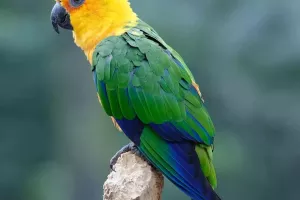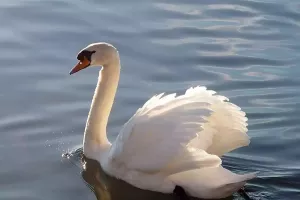Giraffes are the tallest terrestrial animals in the world. When standing, the giraffe can reach 5 meters from head to toe and weigh about 700 kilograms. The fur color patterns are spotted and reticulated. The giraffe's head has a wide forehead, large erect ears, and a pair of short bony horns on the top of the head. The neck is particularly long, and the limbs are tall and strong, with the forelegs slightly longer than the hind legs.
Giraffes mainly feed on leaves and twigs, and among the various leaves, Mimosa leaves are the most favored by giraffes. A giraffe can eat 63 kilograms of leaves and twigs a day. When the leaves are rich in water, they can maintain growth through the water in the leaves, and sometimes they can go without drinking water for a year. In addition, giraffes have a layer of horny on their tongues and lips, which can avoid being stabbed by wood thorns on trees.
A giraffe's head can turn almost 360°. The giraffe's head can be turned flexibly not because of its long neck, but because of its unique cervical vertebrae structure. The joints that connect the shoulders and arms of humans allow the upper limbs to move freely, and the cervical spine of a giraffe is like a human joint. When drinking, the giraffe's neck can almost touch the ground; when resting, the neck can be bent back and placed on the thigh. The male deer can linger next to the female deer of his choice, with its long neck ready to strike a deadly blow on a competitor.
The heart of a giraffe is unusually strong. A giraffe's heart is about 60 times the size of a human's. Its heart is 65 centimeters wide, its walls are 7-8 centimeters thick, and its heart weighs 11 kilograms. Since giraffes have a huge heart, the blood output of giraffes is also surprisingly large, which can reach 60 liters per minute. This excellent blood flow rate ensures that the giraffe's blood can supply normal blood to the brain through its long neck.
The length and hardness of each cervical vertebra of a giraffe are extremely hard, far exceeding that of ordinary creatures, but it seems that only such a hard and long cervical vertebra can perfectly support the weight of the giraffe's long neck. In addition, giraffes have very slender four legs, which may feel very fragile when looking at the thin legs, but in fact, giraffes have very strong legs and can kick away some predators, such as lions.
Giraffe's little long legs look beautiful, but they are also troublesome. Because of their long legs, they can't drink water as easily. Giraffes must kneel and then bend down to drink water. This posture is not only unsightly, but also very dangerous, and it is very vulnerable to sudden attacks by other animals. Because it takes at least a minute for them to stand up. So it is said that if there is enough water in the leaves, some giraffes can go a year without drinking water.
Giraffes are on the brink of extinction. The number of giraffes, the world's tallest animal, has plummeted from 140,000 to 80,000 in the past fifteen years. According to the Namibia-based Giraffe Conservation Foundation, 150 years ago, more than 2 million giraffes roamed the land, but today the giraffe population is in sharp decline.


